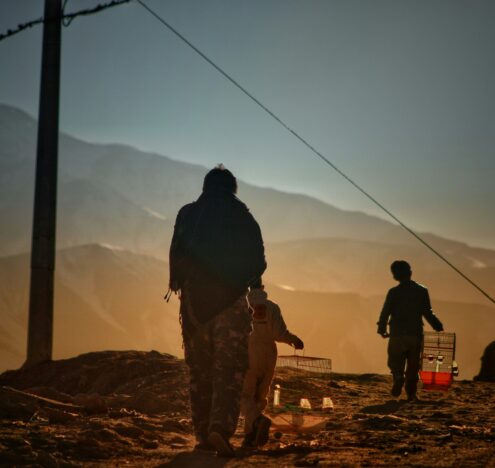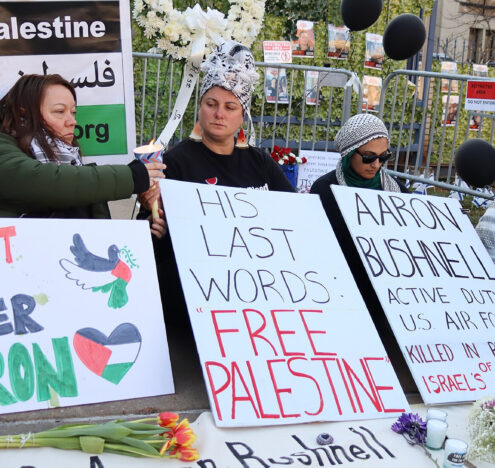The relationship between governments and their violent proxies is a minefield. The Wagner Group’s Yevgeny Prigozhin’s aborted mutiny in Russia clearly shows the dangers of sponsoring groups with guns. When things go wrong, they can go very wrong — and quickly. As the mutiny unfolded, Josep Borrell, High Representative of the European Union for Foreign Affairs and Security Policy, described it as “the monster acting against his creator.”
The creator, however, can be a monster too. The principal-agent problem is typically viewed from the prism of the principal, with the agent being the unreliable one. Yet, the principal can be unstable too. President Vladimir Putin’s past dealings with proxies in Chechnya can help us understand the Putin-Prigozhin partnership from Prigozhin’s perspective. If Prigozhin has learned anything from his time as a Putin loyalist with ties to the St. Petersburg organized crime networks, it is that his patron can be duplicitously fickle.
As Anatol Lieven has pointed out, Putin habitually plays his subordinate state oligarchs in Moscow against each other. The Russian president’s little-known dealings with violent proxies in Chechnya similarly show how mercilessly he can play various armed actors in times of war. Prigozhin is unlikely under any illusion that he will not be discarded, as were his predecessors, unless he plays the game no less mercilessly and duplicitously than his principal.
Proxy Politics in Context
Outsourcing violence is a global phenomenon. Even governments with powerful armies occasionally use contractors or nonstate actors to wield violence on their behalf. These actors range from ordinary civilians and private military contractors to insurgents and criminals. For example, the United States used the infamous private military firm Blackwater to “secure neighborhoods” in New Orleans following Hurricane Katrina, Turkey used Kurdish Hezbollah against Kurdistan Workers’ Party insurgents, and India used the Ikhwan-ul-Muslimeen against Kashmiri separatists. The list goes on.
I discussed many of these examples in my book, “Gambling with Violence.” The book offers a new “balance-of-interests” framework to explain the state-proxy partnership and shows that the perspective of proxies matters as much as that of the state.
Inspired by the work of Jeremy Weinstein on rebel groups, my balance-of-interests framework separates proxies into two types based on their primary motivations. Some (opportunists) prioritize the immediate material payoffs of collaboration, be it protection or patronage. Others (activists) are more farsighted and play a longer game in the name of ideas. Opportunists prioritize short-term gains. They may, therefore, be compelled or co-opted into working with governments only when the latter is faring reasonably well on the battlefield. Activists, for whom ideals or identities rank above survival and enrichment, can be convinced to collaborate even when the government is losing, so long as they believe the alliance will serve their long-term aims. However, making credible promises of future rewards to activists requires cultivating social or ideological links with them. In other words, it’s crucial to construct a compelling, even if not altogether earnest, narrative of shared commitments.
Prigozhin is interesting. While mercenaries are typically thought of as motivated purely by profit, Prigozhin’s motivations appear to be more complicated — and mixed. Those who know him describe Prigozhin as someone who is in it less for the money and more for “the thrill of the chase, the belief he is battling corrupt elites on behalf of the common man, and a desire to crush his rivals.” Still, as my balance-of-interests framework suggests, the fact that Prigozhin cannot just be bought off makes him particularly difficult to control. It certainly makes him more challenging to control than the proxies Putin used in Chechnya.
The Chechnya Precedent
Chechnya is one of Russia’s 21 ethnically-defined republics. Following the dissolution of the Soviet Union in 1991, Dzhokhar Dudayev declared Chechnya’s independence from Russia. During the waning days of the USSR, Dudayev served as the commander of a division of nuclear bomber aircraft in Estonia. When the Kremlin ordered him to suppress Estonia’s bid for independence, he refused and even flew the Estonian flag at his base. He returned to Chechnya as an anti-communist nationalist leader of the All-National Congress of Chechen Peoples. He won a decisive victory in the 1991 presidential elections in Chechnya, which now considered itself independent from Russia.
If Prigozhin has learned anything from his time as a Putin loyalist with ties to the St. Petersburg organized crime networks, it is that his patron can be duplicitously fickle.
Then-Russian President Boris Yeltsin responded to Chechnya’s declaration of independence by sending troops to Grozny, but Dudayev’s forces prevented them from leaving the Grozny airport. Yeltsin feared a chain reaction of further declarations of independence by the “more important” republics. As an “ethnic republic” within the Russian Soviet Republic (and, later, the Russian Federation), Chechnya’s self-determination could have led other ethnic republics to follow, which could mean the unraveling of Russia months after the collapse of the Soviet Union.
Yeltsin launched a ground assault on Grozny on December 31, 1994, the day Russian media was on holiday over the new year, to keep the operation out of the public eye. However, the Russian military failed to overcome the Chechen resistance and, in 1996, withdrew its forces under a humiliating peace agreement that gave Chechnya considerable autonomy, though not full independence.
The Return
Russian strategists carefully studied the mistakes of the first war and made key improvements that significantly enhanced Russia’s military strength. The operational group of federal forces in Chechnya was quadrupled, and shifts in the military budget led to better access to arms and equipment. New command and coordination mechanisms boosted military morale and efficiency. So effective were the improvements in the military’s force employment that, within several months of the campaign, the Russian armed forces controlled about 80% of Chechen territory.
Just as the second Chechen War was about to ensue, Yeltsin announced Putin as prime minister and declared him his chosen successor. Putin took over the day-to-day coordination of the military campaign.
One month after the start of the second Chechnya campaign, Moscow released a convicted embezzler and ex-mayor of Grozny, Bislan Gantamirov, from prison. Gantamirov had been jailed for misappropriating federal funds allocated to restore the Chechen capital. He was to lead an irregular military outfit comprising his personal supporters and former rebels that was tasked with assisting the Russian federal troops in gaining control of Grozny.
Gantamirov’s release from prison immediately prompted the Russian newspaper Kommersant to speculate that it was intended to help the Russian army to take over Grozny. Soon after, Gantamirov publicly announced his intent “to assume command of all armed forces which will be formed out of Chechen population” and, afterward, to assume an official political post in Chechnya.
Gantamirov’s 800-member irregular force was charged with entering central Grozny, pressing from three directions. As its former mayor, Gantamirov had a deep knowledge of the city. The battle concluded with a decisive Russian victory, with the gantamirovtsy (Gantamirov’s fighters) playing a critical role. Gantamirov emerged as a war hero. While he was working for the Kremlin, the Russian authorities cultivated an image of him as “a courageous man who has a great authority in Chechnya.”
The Switch
After establishing control in Grozny, Moscow suddenly switched its support from Gantamirov to ex-rebel Mufti Akhmad Kadyrov. Kadyrov was known for practicing a moderate form of Islam and opposing the violent Wahhabism of some Chechen rebels. He also did not seem to hold strong political beliefs. Kadyrov’s fighters controlled Gudermes, the second-largest Chechen city, which the Kremlin planned to turn into the republic’s temporary capital. The federal forces concluded an agreement with Kadyrov that involved his guerrillas, making Gudermes rebel-free without Russian army assistance.
What made Kadyrov attractive to the Kremlin was that, while he was powerful, he was not too powerful. His influence was at the time limited to Chechnya’s northern and northeastern regions, where separatist sentiments had traditionally been weaker and federal controls tighter. However, the majority of Chechen society never supported Kadyrov and suspected him of corruption. As such, Chechens were more dependent on the Kremlin than Gantamirov.
To Putin, criminals were appealing allies due to his past KGB training. Putin fostered relationships with those on whom he had compromising material (kompromat), as they could be prosecuted or blackmailed if it ever became necessary to punish their disloyalty.
Kadyrov was appointed to head the administration in Chechnya, and his kadyrovtsy (Kadyrov’s fighters), a mix of ex-rebels, criminals, and inexperienced hopefuls, helped establish Moscow’s control over the rest of the republic. Kadyrov’s personal contacts with insurgents, religious background, and opposition to Wahhabism allowed the Kremlin to carry out a successful amnesty program, which swelled the ranks of the kadyrovtsy. Moreover, the brutality of the federal security forces’ “cleansing” operations made the irregular military outfit the only source of physical safety for many Chechen men. By 2003, pardoned rebels constituted two-thirds to three-quarters of Kadyrov’s personal army; many of them were coerced into joining the kadyrovtsy.
When Kadyrov was assassinated in 2004 by his rivals, Putin redirected his support to his son, Ramzan, the kadyrovtsy commander. By 2006, the kadyrovtsy squad boasted at least 5,000 armed members and controlled Chechnya’s Ministry of Internal Affairs. In 2007, after the younger Kadyrov turned 30 (which made him eligible for the presidency), Putin signed a decree installing him as the acting president of the Chechen Republic. Russia officially ended its “counterterrorism” campaign in Chechnya in April 2009.
Lessons Learned
Prigozhin’s story contains parallels to those who served the Kremlin’s interests in Chechnya and were then discarded. Similar to Ruslan Labazanov in the first Chechen war, and Bislan Gantamirov in the second, Prigozhin was released from prison by striking a deal with Russian intelligence. His patron valued his connections to the St. Petersburg organized crime networks. Kimberly Marten points out that Prigozhin was a common criminal sentenced to 12 years in prison in the Soviet Union and was only able to rise in business and government circles due to his subservience to Putin. Like Kadyrov, Prigozhin took charge of military units without formal training or experience. There is a world in which he could have ended up as one of Putin’s most valuable assets, like the young Ramzan Kadyrov, who has become the warlord president of a vassal state within the Russian Federation. But, perhaps Prigozhin was becoming too powerful too quickly for that possibility to materialize.
As Lieven and Marten have observed, Putin seems to have a proclivity to let his subordinate state oligarchs air their disagreements in public before magnanimously resolving their conflicts. Prigozhin’s well-publicized dispute with the Ministry of Defense appeared at first as one of these feuds. Suddenly, it became much more. Prigozhin seems to have developed an inflated sense of self-importance. However, his insubordination would likely not have led to an all-out confrontation had Putin not decided to fold Wagner into the Ministry of Defense, siding with his generals. Prigozhin might have also believed that he had insider support.
The run-up to mutiny was a moment of truth for Prigozhin. As the Chechnya case suggests, he was potentially becoming sidelined for being too powerful and too difficult to control. Perhaps from his perspective, if he did not act, he would end up like the likes of Gantamirov. His was a gamble for a Kadyrov-like status.
To fight any war is to gamble. War inevitably contains the element of chance. Something can always go wrong. To fight a war with mercenaries is particularly risky because of their potential for duplicity that so preoccupied Niccolò Machiavelli in “The Prince.” Neither is the government always a reliable partner from the perspective of proxies. Syrian Kurds, who had allied with the United States against the Islamic State of Iraq and Syria, learned this lesson after the Trump administration hastily withdrew support in 2019.
It is not surprising that someone like Prigozhin would try to play Putin. Moscow bought Kadyrov’s lasting loyalty by giving him full control over Chechnya. It is incredible, and perhaps telling, that Prigozhin is still alive. This may be a sign that he is still in a position of some strength, but not so much as to be a serious threat to Putin, for now.





















